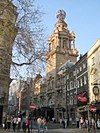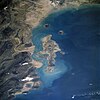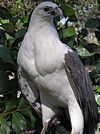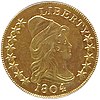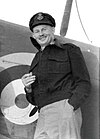Wikipedia:Today's featured article/February 2013
| << | Today's featured articles for February 2013 | >> | ||||
|---|---|---|---|---|---|---|
| Su | Mo | Tu | We | Th | Fr | Sa |
| 1 | 2 | |||||
| 3 | 4 | 5 | 6 | 7 | 8 | 9 |
| 10 | 11 | 12 | 13 | 14 | 15 | 16 |
| 17 | 18 | 19 | 20 | 21 | 22 | 23 |
| 24 | 25 | 26 | 27 | 28 | ||
February 1
English National Opera (ENO) is an opera company based in London, resident at the London Coliseum (pictured). Its productions are sung in English. The company's origins were in the late 19th century, when the philanthropist Emma Cons, later assisted by her niece Lilian Baylis, presented theatrical and operatic performances at the Old Vic in a rough area of London for the benefit of local people. Baylis acquired and rebuilt Sadler's Wells theatre in north London, which was better suited to opera than the Old Vic. The opera company grew there into a permanent ensemble in the 1930s and, after expansion required a move to the Coliseum in 1968, adopted its present name in 1974. Conductors associated with the company include Colin Davis, Reginald Goodall, Charles Mackerras, Mark Elder and Edward Gardner. ENO is known for its emphasis on the dramatic aspect of opera, with productions, sometimes controversial, by directors including David Pountney, Jonathan Miller, Nicholas Hytner, Phyllida Lloyd and Calixto Bieito. In addition to the core operatic repertoire, ENO has presented a wide range of works, from early operas by Monteverdi to new commissions, operetta and Broadway shows. (Full article...)
Recently featured: Drymoreomys – Bastion – Dreadnought
February 2
The green children of Woolpit is the name given to two children who reportedly appeared in the village of Woolpit in Suffolk, England, some time in the 12th century. They were of generally normal appearance except for the green colour of their skin. They spoke in an unknown language, and the only food they would eat at first was green beans. Eventually they lost their green pallor, but the boy was sickly and died soon after baptism. After learning English, the girl explained that they had come from an underground world whose inhabitants are green. The only near-contemporary accounts are contained in Ralph of Coggeshall's Chronicum Anglicanum and William of Newburgh's Historia rerum Anglicarum, written in about 1189 and 1220 respectively. Between then and their rediscovery in the mid-19th century, the green children seem to surface only in Bishop Francis Godwin's fantastical The Man in the Moone. The story also provided the inspiration for The Green Child, the only novel written by the English anarchist poet and critic Herbert Read. The main explanations of the story are that it is a typical folk tale describing an imaginary encounter with the inhabitants of another world, or it is a garbled account of a historical event. (Full article...)
Recently featured: English National Opera – Drymoreomys – Bastion
February 3
Otto Graham (1921–2003) was an American football quarterback who played for the Cleveland Browns in the All-America Football Conference and National Football League. Graham is regarded by critics as one of the most dominant players of his era, having taken the Browns to league championship games every year between 1946 and 1955, winning seven of them. He grew up in Waukegan, Illinois, and entered Northwestern University in 1940 on a basketball scholarship, although football became his main sport. After a brief stint in the military, and a season playing basketball for the Rochester Royals, Graham joined the Browns, where he thrived. With him at quarterback, the Browns posted a record of 114 wins, 20 losses and 4 ties, including a 9–3 win–loss record in the playoffs. While most of Graham's statistical records have been surpassed, he still holds the NFL record for career average yards gained per pass attempt. After he retired from playing football in 1955, Graham became head football coach at the Coast Guard Academy in Connecticut for seven years. He then spent three unsuccessful seasons as head coach of the Washington Redskins before returning to the Coast Guard Academy as athletic director until his retirement. (Full article...)
Recently featured: Green children of Woolpit – English National Opera – Drymoreomys
February 4
Lady Saigō (1552–89) was the first consort and trusted confidant of Tokugawa Ieyasu, the samurai lord who unified Japan at the end of the 16th century and then ruled as Shogun. One of her four children became the second Tokugawa shogun, Tokugawa Hidetada. During her relationship with Ieyasu, Lady Saigō influenced his philosophies, choice of allies, and policies as he rose to power, and she thus had an indirect effect on the architecture of the Tokugawa shogunate. Although less is known of her than some other figures of the era, she is generally regarded as the "power behind the throne". Her contributions were considered so significant that she was posthumously inducted to the Senior First Rank of the Imperial Court, the highest honor that the Emperor of Japan could confer. A devout Buddhist, she donated money to temples in Suruga province, where she resided as the consort of Ieyasu, first in Hamamatsu Castle and later in Sunpu Castle. She also established a charitable organization that assisted visually impaired women with no other means of support. Lady Saigō died at a fairly young age, under somewhat mysterious circumstances. Although murder was suspected, no culprit was identified. (Full article...)
Recently featured: Otto Graham – Green children of Woolpit – English National Opera
February 5
There have been tanks in the Spanish Army since French FT-17s were delivered in 1919. These were used in the Rif War and participated in the first amphibious landing with tanks. In 1925, the Spanish Army began to produce its own tank, based on the FT-17, but it was never put into mass production. During the Spanish Civil War, the two opposing armies received many tanks from foreign powers. The war proved inconclusive in regards to the proof of mechanized warfare, despite attempts by foreign advisers and soldiers to use newly devised theories. Afterwards, Spain began to manufacture a light tank, known as the Verdeja, but the project was a failure. In 1953, the United States agreed to supply tanks including the M48 Patton (pictured) but after a dispute about the tanks' use Spain began to look elsewhere for further tanks, including the AMX-30E. Renewed plans for a Spanish tank (the Lince program) failed due to financial problems; instead Spain modernized the AMX-30Es and procured American M60 Patton tanks. In 1994, Spain began negotiating with Germany to purchase the Leopard 2, procuring 108 Leopard 2A4s and building 219 Leopard 2Es in Spain; these are still in use. (Full article...)
Recently featured: Lady Saigō – Otto Graham – Green children of Woolpit
February 6
The Huia, which became extinct in the early 20th century, was the largest species of New Zealand wattlebird. It belonged to a family found only in New Zealand, one so ancient that no relation is found elsewhere. Already rare before Europeans arrived in New Zealand, it was confined to some mountain ranges in the south east of the North Island. It had deep metallic, bluish-black plumage with a greenish iridescence on the upper surface, especially about the head. It was remarkable for having the most pronounced sexual dimorphism in bill shape of any species of bird in the world. The female's beak was long, thin and arched downward, while the male's was short and stout. The last confirmed sighting was in 1907. Its extinction had two main causes: overhunting to procure Huia skins for mounted specimens for museums and private collectors, and widespread deforestation by European settlers to create agricultural pasture. The Huia is one of New Zealand's best known extinct birds because of its bill shape, its sheer beauty and special place in Māori culture and oral tradition. Māori regarded the bird as tapu (sacred), and the wearing of its skin or feathers was reserved for people of high status. (Full article...)
Recently featured: Tanks in the Spanish Army – Lady Saigō – Otto Graham
February 7
"Confirmed Dead" is the second episode of the fourth season and 74th episode overall of the drama television series Lost. It marks the first appearance of main characters Miles Straume (played by Ken Leung) and Charlotte Lewis (Rebecca Mader, pictured) and supporting character Frank Lapidus (Jeff Fahey). The actors were given fake scenes when auditioning to limit the leak of spoilers and each actor influenced their character's development. Mader's and Fahey's appearances were different from the writers' original visions of Charlotte and Frank—the writers changed the characters to suit them. The narrative begins 91 days after the crash of Oceanic Airlines Flight 815 on a tropical island somewhere in the South Pacific Ocean. Flashbacks introduce four people from an offshore freighter who land on the island. The episode, which first aired in America and Canada on February 7, 2008, was written by Drew Goddard and Brian K. Vaughan and directed by Stephen Williams. It was watched by seventeen million Americans and received generally positive critical reception as reviewers praised the introduction of the new characters. (Full article...)
Recently featured: Huia – Tanks in the Spanish Army – Lady Saigō
February 8
La Stazione is an Italian restaurant and former train station in the village of New Paltz in Ulster County, New York. The building was the first of two railroad stations constructed in the town of New Paltz, and it is the only former Wallkill Valley Railroad station standing at its original location. Built in 1870, it burned down in 1907 and was rebuilt later that year (pictured). The rise of the automobile caused the railroad to end passenger service in 1937; by 1959 the station was completely closed and sold off. It was then used by a variety of businesses and organizations, including a public-access television station. Freight service along the Wallkill Valley line continued until 1977, when the corridor was shut to regular rail traffic. The building was in such a state of disrepair by the 1980s that it was almost demolished, and the nearby tracks were torn up and sold for scrap by 1984. However, the station avoided demolition and was renovated in 1988, becoming a restaurant in 1999. The adjacent rail corridor was also rehabilitated, and opened as a public walkway, the Wallkill Valley Rail Trail. La Stazione was expanded in 2003 and served as the setting for a scene in a 2008 mob film. (Full article...)
Recently featured: "Confirmed Dead" – Huia – Tanks in the Spanish Army
February 9
Verpa bohemica is a species of fungus in the Morchellaceae family, commonly known as the "early morel" or the "wrinkled thimble-cap". The species was first described in the scientific literature by the Czech physician and mycologist Julius Vincenz von Krombholz in 1828; bohemica refers to Bohemia (now a part of the Czech Republic) where Krombholz originally collected the species. The mushroom has a pale yellow or brown thimble-shaped cap that has a surface wrinkled and ribbed with brain-like convolutions. The cap hangs from the top of a lighter-colored, brittle stem that measures up to 12 cm (4.7 in) long. It is one of several species known informally as a "false morel". In the field, the mushroom is reliably distinguished from the true morels on the basis of cap attachment: V. bohemica has a cap that hangs completely free from the stem. Although widely considered edible, consumption is generally not advised due to reports of poisoning in susceptible individuals. Poisoning symptoms include gastrointestinal upset and lack of muscular coordination. V. bohemica is found in northern North America, Europe, and Asia. It fruits in early spring, growing on the ground in woods following the snowmelt. (Full article...)
Recently featured: La Stazione – "Confirmed Dead" – Huia
February 10
The 2005 Qeshm earthquake was a powerful seismic event that occurred on November 27, 2005, on the sparsely populated Qeshm Island (pictured) off Southern Iran. It killed 13 people and devastated 13 villages. It was Iran's second major earthquake of 2005, following that at Zarand in February. The epicenter was about 1,500 kilometers (930 mi)* south of Tehran. The earthquake registered 5.8 on the moment magnitude scale. More than 400 minor aftershocks followed the main quake, 36 of which were greater than magnitude 2.5. The earthquake occurred in a remote area during the middle of the day, limiting the number of fatalities. Iranian relief efforts were effective and largely adequate, leading the country to decline offers of support from other nations and UNICEF. Qeshm Island is part of the Simply Folded Belt, the most seismically active part of the Zagros fold and thrust belt. Similar to most earthquakes in the area, the 2005 event resulted from reverse slip faulting. Since Iran lies in such a seismically active area, there is a high risk of destructive earthquakes; 1 in 3,000 deaths are attributable to earthquakes. One geophysicist has cited the lack of strict building codes as a serious concern. (Full article...)
Recently featured: Verpa bohemica – La Stazione – "Confirmed Dead"
February 11
Interstate 80 Business (BL-80) is a business loop of Interstate 80 that serves as the main street for the towns of West Wendover, Nevada, and Wendover, Utah, along a roadway named Wendover Boulevard. A line painted on the street marks the Nevada–Utah border. The road, which is 2.26 miles (3.64 km) long, passes West Wendover City Hall and the Peppermill, Montego Bay Resort and Wendover Nugget casinos. A portion of the Nevada segment of BL-80 is concurrent with U.S. Route 93 Alternate, and the entire portion in Utah is coterminous with Utah State Route 58. Wendover Boulevard was completed in 1925 as part of the Victory Highway across America, and was opened by governors George H. Dern of Utah and James G. Scrugham of Nevada and the Secretary of Agriculture, William M. Jardine. In 1926, it became part of U.S. Route 40, which connected California to New Jersey via Nevada and Utah. The Nevada Department of Transportation applied to the American Association of State Highway and Transportation Officials for the business loop designation in the early 1980s. The designation has never been approved, despite business loop signs being posted in both states, as Utah has not submitted a request as required by the association. (Full article...)
Recently featured: 2005 Qeshm earthquake – Verpa bohemica – La Stazione
February 12
Liverpool Football Club's participation in European competitions organised by Union of European Football Associations (UEFA) began in 1964. Since then, Liverpool have won eleven European trophies, making them Britain's most successful team in UEFA competitions. They have won the UEFA Champions League (formerly known as the European Cup) five times, the UEFA Europa League (formerly known as the UEFA Cup) three times, and the UEFA Super Cup three times. Liverpool qualified for European competitions for 21 consecutive seasons until the 1985 European Cup Final, the occasion of the Heysel Stadium disaster, following which the club was banned from Europe for six seasons. Since being readmitted, they have qualified for the Champions League eight times and the UEFA Cup seven times. As a result of their victory in the 2005 UEFA Champions League Final, Liverpool won the European Champion Clubs' Cup trophy (pictured) outright. Bob Paisley is the club's most successful manager in Europe, with five trophies. Liverpool's biggest win in Europe is an 11–0 victory over Strømsgodset in the 1974–75 European Cup Winners' Cup. In European competitions, Jamie Carragher holds the club record for the most appearances, with 139, and Steven Gerrard is the club's record goalscorer, with 38 goals. (Full article...)
Recently featured: Interstate 80 Business (West Wendover, Nevada–Wendover, Utah) – 2005 Qeshm earthquake – Verpa bohemica
February 13
The United States Assay Commission was an agency of the United States government from 1792 to 1980. Its function was to annually supervise the testing of the gold, silver, and (in its final years) base metal coins produced by the United States Mint to ensure that they met specifications. The Mint Act of 1792 authorized the Assay Commission. Beginning in 1797, it met in most years at the Philadelphia Mint. Each year, the President of the United States appointed unpaid members, who would gather in Philadelphia to ensure the weight and fineness of silver and gold coins issued the previous year were to specifications. Although some members were designated by statute, for the most part the commission, which was freshly appointed each year, consisted of prominent Americans, including numismatists. Appointment to the Assay Commission was eagerly sought after—for one thing, commissioners received a commemorative medal, different each year, and, with the exception of the 1977 issue which was sold to the general public, extremely rare. In 1971, the commission met, but for the first time had no gold or silver to test, with the end of silver coinage for circulation. Beginning in 1977, President Jimmy Carter appointed no members of the public to the commission, and in 1980, he signed legislation abolishing it. (Full article...)
Recently featured: Liverpool F.C. in European football – Interstate 80 Business (West Wendover, Nevada–Wendover, Utah) – 2005 Qeshm earthquake
February 14
"Single Ladies (Put a Ring on It)" is a song by American recording artist Beyoncé Knowles from her third studio album, I Am... Sasha Fierce (2008). It was the album's lead single alongside "If I Were a Boy", contrasting Knowles' persona as herself and her aggressive onstage alter ego Sasha Fierce. Following her secret marriage to Jay-Z in April 2008, Knowles was inspired to write "Single Ladies" to explore men's unwillingness to commit. It is a dance-pop song with R&B, dancehall, disco and bounce influences. According to the lyrics, the female protagonist is in a club to celebrate after a recent end to a poor relationship; her former lover is also present. The song and the repeated refrain, "If you like it then you should have put a ring on it", are directed to him. Critics praised the song for its smooth production. "Single Ladies" won three Grammy Awards, including Song of the Year. It peaked at number one on the US Billboard Hot 100 chart. The accompanying music video was shot in black-and-white and features the J-Setting dance choreography inspired by "Mexican Breakfast", a 1969 routine choreographed by Bob Fosse. The award-winning video has been parodied and imitated around the world. (Full article...)
Recently featured: United States Assay Commission – Liverpool F.C. in European football – Interstate 80 Business (West Wendover, Nevada–Wendover, Utah)
February 15
"We Can Do It!" is an American wartime propaganda poster produced by J. Howard Miller in 1943 for Westinghouse Electric to boost worker morale. The poster is generally thought to be based on a black-and-white wire service photograph taken of a Michigan factory worker named Geraldine Hoff. During World War II the image was strictly internal to Westinghouse, displayed only during February 1943, and was not for recruitment but to exhort already-hired women to work harder. It was rediscovered in the early 1980s and widely reproduced in many forms, often called "We Can Do It!" but also called "Rosie the Riveter" after the iconic figure of a strong female war production worker. The "We Can Do It!" image was used to promote feminism and other political issues beginning in the 1980s. The image made the cover of the Smithsonian magazine in 1994 and was fashioned into a US first-class mail stamp in 1999. It was incorporated in 2008 into campaign materials for several US politicians, and was reworked by an artist in 2010 to celebrate the first woman becoming prime minister of Australia. The poster is one of the ten most-requested images at the National Archives and Records Administration. (Full article...)
Recently featured: "Single Ladies (Put a Ring on It)" – United States Assay Commission – Liverpool F.C. in European football
February 16
The history of Lithuania between 1219 and 1295 covers the establishment and early history of the Grand Duchy of Lithuania, the first Lithuanian state. In 1219, 21 Lithuanian dukes signed a peace treaty with Galicia–Volhynia – the first proof that the Baltic tribes were uniting. Despite continuous warfare with two Christian orders, the Livonian Order and the Teutonic Knights, the Grand Duchy of Lithuania was established and gained some control over neighbouring lands that were vulnerable after the collapse of Kievan Rus'. Mindaugas (modern commemorative coin pictured) was crowned as King of Lithuania in 1253 and is traditionally regarded as the founder of the state. However, in 1261, he broke the peace with the Livonian Order, and his assassination in 1263 by Treniota ended the early Christian kingdom in Lithuania. It was a pagan empire for the next 120 years, fighting against the Teutonic and Livonian Orders during the Northern Crusades. After Mindaugas' death, the Grand Duchy of Lithuania entered times of relative instability but did not disintegrate. Vytenis assumed power in 1295, and during the next 20 years laid solid foundations for the Duchy to expand and grow. (Full article...)
Recently featured: "We Can Do It!" – "Single Ladies (Put a Ring on It)" – United States Assay Commission
February 17
Eagle was a seminal British children's comic, first published in April 1950. It was founded by Marcus Morris, an Anglican vicar, who felt that the church was not communicating its message effectively. Simultaneously disillusioned with contemporary children's literature, he and artist Frank Hampson created a dummy comic based on Christian values. Morris hawked the idea to several publishers, with little success, until Hulton Press decided to take it on. Following a huge publicity campaign, the first issue sold about 900,000 copies. Featured in colour on the front cover was the comic's most recognisable story, Dan Dare, Pilot of the Future (pictured). Other popular stories included Riders of the Range and P.C. 49. Eagle also contained news and sport sections, and educational cutaway diagrams of sophisticated machinery. Amidst a takeover of the comic's publisher and a series of acrimonious disputes, Morris left in 1959; Hampson followed shortly thereafter. Although Eagle continued in various forms, a perceived lowering of editorial standards preceded plummeting sales, and it was eventually subsumed by its rival, Lion, in 1969. A relaunched Eagle ran for over 500 issues between 1982 and 1994. (Full article...)
Recently featured: History of Lithuania (1219–1295) – "We Can Do It!" – "Single Ladies (Put a Ring on It)"
February 18
The White-bellied Sea Eagle is a large diurnal bird of prey in the family Accipitridae. A distinctive bird, adults have a white head, breast, under-wing coverts and tail. The upper parts are grey and the black under-wing flight feathers contrast with the white coverts. Like many raptors, the female is slightly larger than the male, and can measure up to 90 cm (36 in) long with a wingspan of up to 2.2 m (7 ft), and weigh 4.5 kg (10 lb). The call is a loud goose-like honking. Resident from India and Sri Lanka through southeast Asia to Australia on coasts and major waterways, the White-bellied Sea Eagle breeds and hunts near water, and fish form around half of its diet. Opportunistic, it consumes carrion and a wide variety of animals. Although rated of Least Concern globally, it has declined in parts of southeast Asia such as Thailand, and southeastern Australia. Human disturbance to its habitat is the main threat, both from direct human activity near nests which impacts on breeding success, and from removal of suitable trees for nesting. The White-bellied Sea Eagle is revered by indigenous people in many parts of Australia, and is the subject of various folk tales throughout its range. (Full article...)
Recently featured: Eagle (comic) – History of Lithuania (1219–1295) – "We Can Do It!"
February 19
The Turban Head eagle was a ten-dollar gold piece, or eagle, struck by the United States Mint from 1795 to 1804. The piece was designed by Robert Scot, and was the first in the eagle series, which continued until the Mint ceased striking gold coins for circulation in 1933. The common name is a misnomer; Liberty does not wear a turban but a cap, believed by some to be a pileus or Liberty cap: her hair twisting around the headgear makes it appear to be a turban. The number of stars on the obverse was initially intended to be equal to the number of states in the Union, but with the number at 16, that idea was abandoned in favor of using 13 stars in honor of the original states. The initial reverse, featuring an eagle with a wreath in its mouth, proved unpopular and was replaced by a heraldic eagle. Increases in the price of gold made it profitable for the coins to be melted down, and in 1804, President Thomas Jefferson ended coinage of eagles; the denomination was not struck again for circulation for more than 30 years. Four 1804-dated eagles (one shown), which were struck in 1834 for inclusion in sets of US coins to be given to foreign potentates, are among the most valuable US coins. (Full article...)
Recently featured: White-bellied Sea Eagle – Eagle (comic) – History of Lithuania (1219–1295)
February 20
HMS Eagle was an early aircraft carrier of the Royal Navy. Ordered by Chile as the Almirante Latorre-class battleship Almirante Cochrane, she was laid down on 20 February 1913. In early 1918 she was purchased by Britain for conversion to an aircraft carrier. The ship was initially assigned to the Mediterranean Fleet and then later to the China Station. Eagle spent the first nine months of World War II in the Indian Ocean searching for German commerce raiders. She was equipped solely with Fairey Swordfish torpedo bombers until late 1940. She was transferred to the Mediterranean in May 1940, where she escorted multiple convoys to Malta and Greece and attacked Italian shipping, naval units and bases in the Eastern Mediterranean. Whenever Eagle was not at sea, her aircraft were disembarked and used ashore. The ship was relieved by a more modern carrier in March 1941 and ordered to hunt for Axis shipping in the Indian Ocean and the South Atlantic. After completing a major refit in early 1942, the ship made multiple trips delivering fighter aircraft to Malta to boost its air defences. Eagle was torpedoed and sunk by the German submarine U-73 in August 1942 while escorting a convoy to Malta. (Full article...)
Recently featured: Turban Head eagle – White-bellied Sea Eagle – Eagle (comic)
February 21
Look Mickey is a 1961 oil on canvas painting by Roy Lichtenstein. Based on an illustration showing Mickey Mouse and Donald Duck during a fishing mishap, it is widely regarded as the bridge between his abstract expressionism and pop art works. It is notable for its ironic humor and aesthetic value as well as being the first example of the artist's employment of Ben-Day dots, speech balloons and comic imagery as a source for a painting. Building on his late 1950s drawings of comic strips characters, Look Mickey marks Lichtenstein's first full employment of painterly techniques to reproduce almost faithful representations of pop culture and so satirize and comment upon the then developing process of mass production of visual imagery. In this, Lichtenstein pioneered a motif that became influential not only in 1960s Pop art but continuing to the work of artists today. The work dates from Lichtenstein's first solo exhibition, and is regarded by art critics as revolutionary both as a progression of pop art and as a work of modern art in general. It was later shown hanging prominently in Lichtenstein's studio in his 1973 painting, Artist's Studio—Look Mickey. (Full article...)
Recently featured: HMS Eagle – Turban Head eagle – White-bellied Sea Eagle
February 22
Alexis Bachelot (1796–1837) was a Roman Catholic priest and first Prefect Apostolic of the Sandwich Islands who led the first permanent Catholic mission to the Kingdom of Hawaii. He arrived in Hawaii in 1827, expecting the approval of King Kamehameha II. He learned upon arrival that the king had died and that the new government was hostile towards Catholic missionaries. Bachelot nevertheless converted a small group of Hawaiians and quietly ministered to them for four years before being deported on the orders of Kaʻahumanu, the Kuhina Nui of Hawaii. Bachelot traveled to California, where he served as an assistant minister. In 1837, having learned of Kaʻahumanu's death and King Kamehameha III's willingness to allow Catholic priests, Bachelot returned to Hawaii, but found that Kamehameha III had changed his mind. Bachelot was removed from the island and confined to a ship for several months. He was freed after the French and British navies imposed a blockade on Honolulu harbor. He later secured passage on a ship to Micronesia, but died en route. His treatment prompted the government of France to dispatch a frigate to Hawaii, an intervention that led to the emancipation of Catholics there. (Full article...)
Recently featured: Look Mickey – HMS Eagle – Turban Head eagle
February 23
John Jackson (1908–42) was an Australian fighter ace and squadron commander of World War II. He was credited with eight aerial victories, and led No. 75 Squadron during the Battle of Port Moresby in 1942. A grazier and businessman who operated his own private plane, he joined the Royal Australian Air Force Reserve in 1936. Called up for active service in 1939, Jackson served with No. 23 Squadron in Australia before he was posted to the Middle East in November 1940. As a fighter pilot with No. 3 Squadron he flew Gloster Gladiators, Hawker Hurricanes and P-40 Tomahawks during the North African and Syria–Lebanon campaigns. Jackson was awarded the Distinguished Flying Cross and Mentioned in Despatches for his actions in the Middle East. Subsequently posted to the South West Pacific theatre, he was promoted to squadron leader in March 1942 and given command of No. 75 Squadron at Port Moresby, Papua, operating P-40 Kittyhawks. He earned praise for his leadership during the defence of Port Moresby before his death in combat on 28 April. Jacksons International Airport, Port Moresby, is named in his honour. His younger brother Les took over No. 75 Squadron, and also became a fighter ace. (Full article...)
Recently featured: Alexis Bachelot – Look Mickey – HMS Eagle
February 24
Persoonia levis, commonly known as the broad-leaved geebung, is a shrub native to New South Wales and Victoria in eastern Australia. It was first collected by Luis Née in the vicinity of Port Jackson (Sydney) in April 1797. It reaches 5 m (16 ft) in height and has dark grey papery bark and bright green asymmetrical sickle-shaped leaves up to 14 cm (5.5 in) long and 8 cm (3.2 in) wide. The small yellow flowers appear in summer and autumn (December to April), followed by small green fleshy fruit known as drupes. The fruit is juicy but stringy when unripe, and the seeds and skin are inedible. Found in dry sclerophyll forest on sandstone-based nutrient-deficient soils, P. levis is adapted to a fire-prone environment; the plants resprout epicormic buds from beneath their thick bark after bushfires, and can live for over 60 years. Regeneration also takes place after fire by a ground-stored seed bank. The longtongue bee Leioproctus carinatifrons is a pollinator of the flowers, and the fruit are consumed by vertebrates such as kangaroos, possums and currawongs. Despite its horticultural appeal, P. levis is rare in cultivation as it is very hard to propagate, either by seed or cuttings. (Full article...)
Recently featured: John Jackson – Alexis Bachelot – Look Mickey
February 25
Typhoon Chataan is the deadliest natural disaster in the history of Chuuk, a state in the Federated States of Micronesia (FSM). The typhoon formed on June 28, 2002, near the FSM, and for several days it meandered while producing heavy rainfall across the region. On Chuuk, the highest 24-hour precipitation total was 506 mm (19.9 in), greater than the average monthly total. The rain produced floods up to 1.5 m (4.9 ft) deep, causing landslides that killed 47 people. There was also one death on nearby Pohnpei, and damage in the FSM totaled over $100 million. After affecting the FSM, Chataan began a northwest track as an intensifying typhoon. Its eye passed just north of Guam on July 4, though the eyewall moved across the island and dropped heavy rainfall (pictured), causing significant damage to property and some injuries. Typhoon Chataan attained its peak intensity of 175 km/h (110 mph) on July 8. It weakened while turning to the north, and after diminishing to a tropical storm Chataan struck eastern Japan on July 10, flooding more than 10,000 houses and causing damage of about $500 million. The name Chataan means "rainy day" in the Chamorro language, which is spoken on Guam. (Full article...)
Recently featured: Persoonia levis – John Jackson – Alexis Bachelot
February 26
Grand Teton National Park is a United States National Park in northwestern Wyoming, established on February 26, 1929. Approximately 310,000 acres (130,000 ha), it includes the major peaks of the 40-mile-long (64 km) Teton Range and most of the northern sections of the valley known as Jackson Hole. Human history dates back 11,000 years, when the first nomadic Paleo-Indians migrated into the region. The area was explored by mountain man John Colter in 1807, but permanent white settlers did not inhabit it until the 1880s. Efforts to preserve the area as a national park began in the late 19th century and the eventual expansion of the park in 1950 was a watershed in the land conservation movement. Though the Teton Range is the youngest mountain chain in the Rocky Mountains, some of the rocks in the park are the oldest found in any U.S. National Park, at nearly 2.7 billion years. More than 1,000 species of vascular plants, dozens of species of mammals, 300 species of birds, more than a dozen fish species and a few species of reptiles and amphibians exist. The park is a popular destination for mountaineering, camping and fishing, and has over 200 miles (320 km) of hiking trails. (Full article...)
Recently featured: Typhoon Chataan – Persoonia levis – John Jackson
February 27
Fort Dobbs was an 18th-century fort in the Yadkin–Pee Dee River Basin region of the Province of North Carolina, near what is now Statesville in Iredell County. Used for frontier defense during and after the French and Indian War, the fort was built to protect the British settlers of the western portion of what was then Rowan County from Cherokee, Catawba, Shawnee, Delaware and French raids into North Carolina. The fort's name honored Arthur Dobbs, the colonial Governor of North Carolina from 1754 to 1765. When in use, it was the only fort on the frontier between South Carolina and Virginia. On February 27, 1760, the fort was the site of an engagement between Cherokee warriors and provincial soldiers that ended in a victory for the provincials. Fort Dobbs was abandoned after 1766, but archaeological work in the 20th century and historical research in 2005 and 2006 led to the discovery of the fort's exact location and probable appearance. The site on which the fort sat is now operated by North Carolina's Division of State Historic Sites and Properties as Fort Dobbs State Historic Site, and supporters of the site have developed plans for the fort's reconstruction. (Full article...)
Recently featured: Grand Teton National Park – Typhoon Chataan – Persoonia levis
February 28
Highway 61 Revisited is the sixth studio album by the American singer-songwriter Bob Dylan, released in August 1965. Having until then recorded mostly acoustic music, Dylan used rock musicians as his backing band on every track of the album, except for the closing 11-minute ballad, "Desolation Row". Critics have focused on the innovative way in which Dylan combined driving, blues-based music with the subtlety of poetry to create songs that captured the political and cultural chaos of contemporary America. Leading with the single "Like a Rolling Stone" (a top-10 hit in several countries), the album features songs that Dylan has continued to perform live over his long career, including "Ballad of a Thin Man" and "Highway 61 Revisited". He named the album after the major North American highway connecting his birthplace, Duluth, Minnesota, to southern cities famed for their musical heritage, including St. Louis, Memphis, and New Orleans. The album, which peaked at No. 3 in the United States charts and No. 4 in the United Kingdom, was ranked No. 4 on Rolling Stone's 500 Greatest Albums of All Time. "Like a Rolling Stone" was listed at No. 1 on Rolling Stone's 500 Greatest Songs of All Time list. (Full article...)
Recently featured: Fort Dobbs (North Carolina) – Grand Teton National Park – Typhoon Chataan

